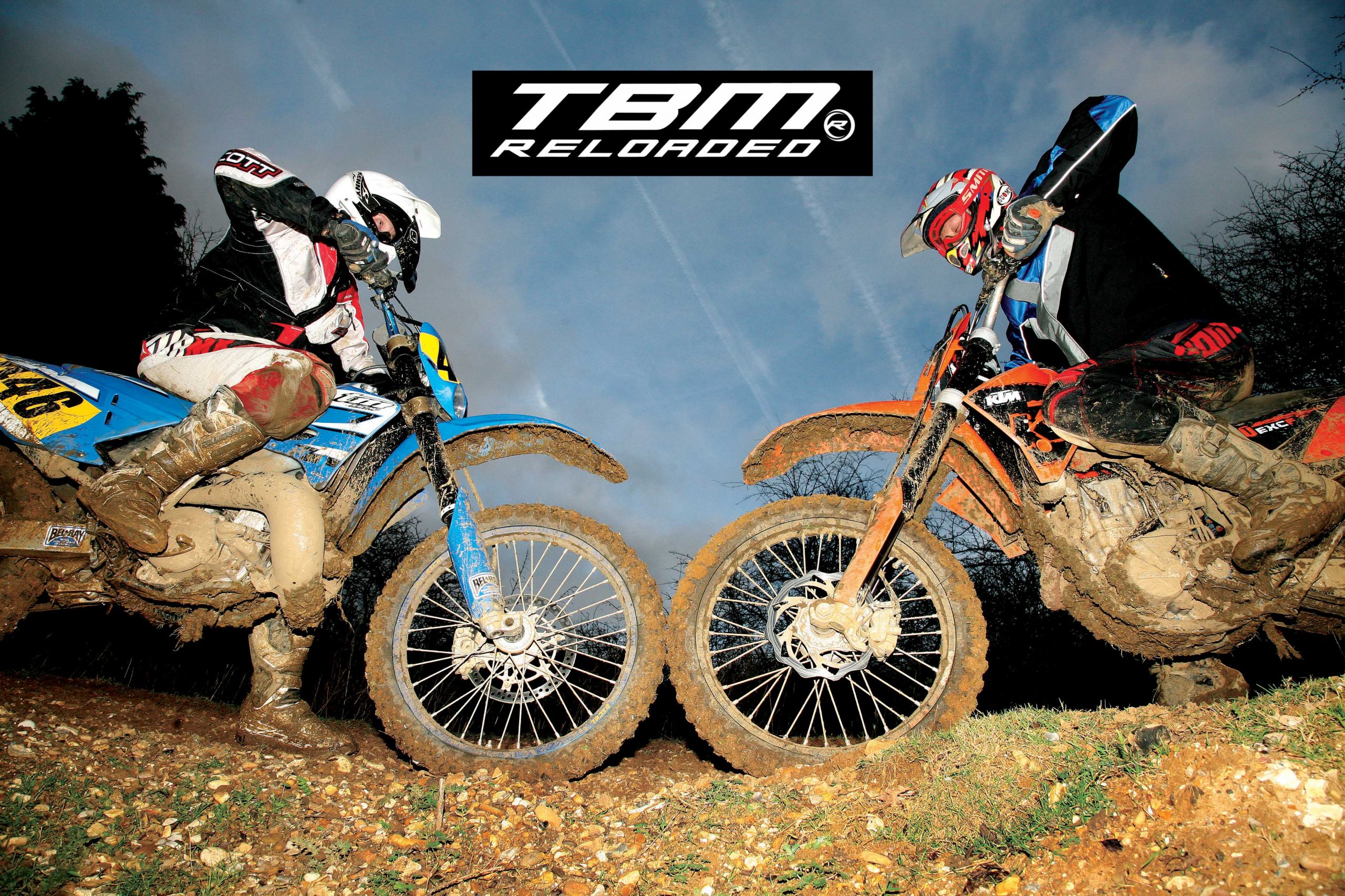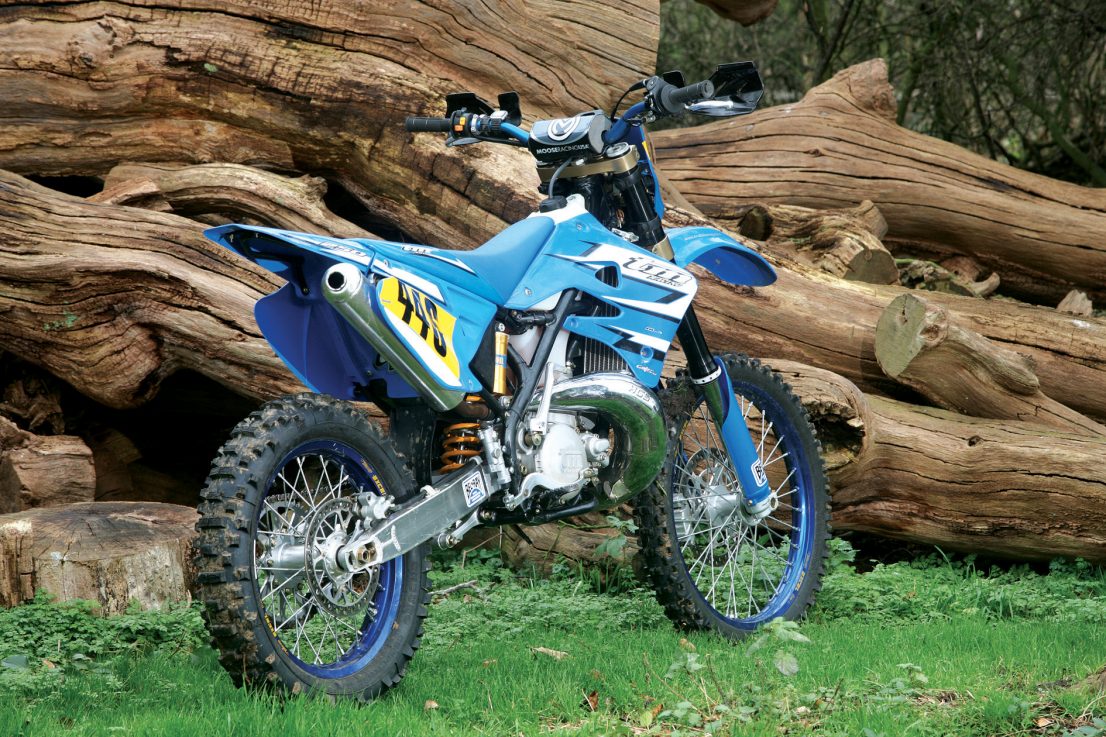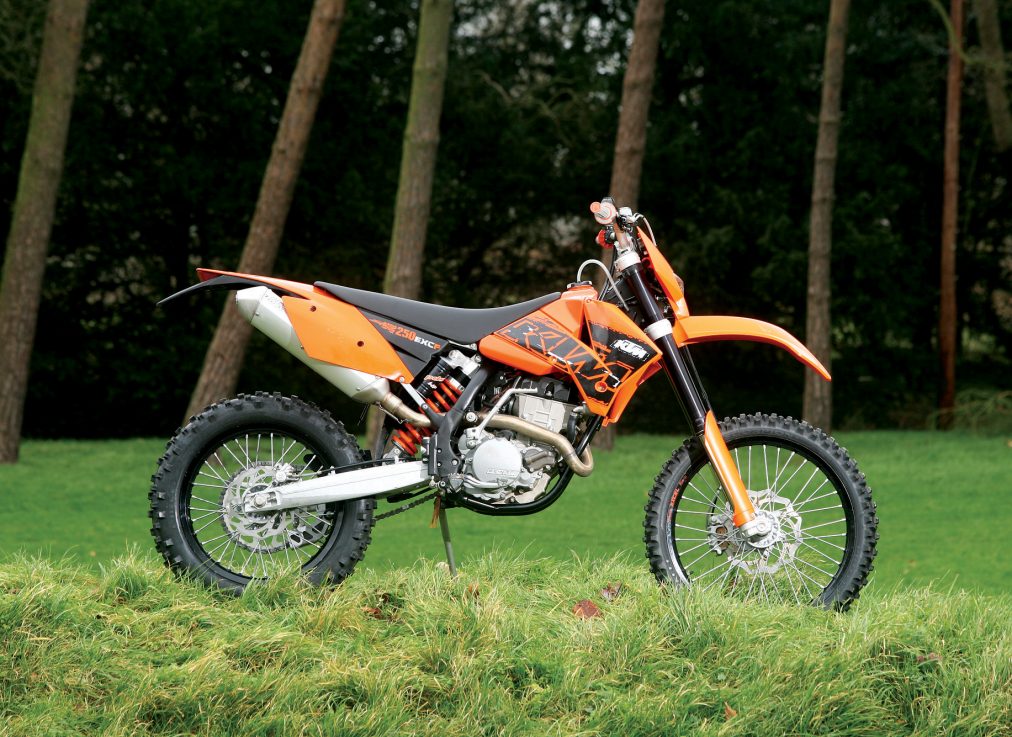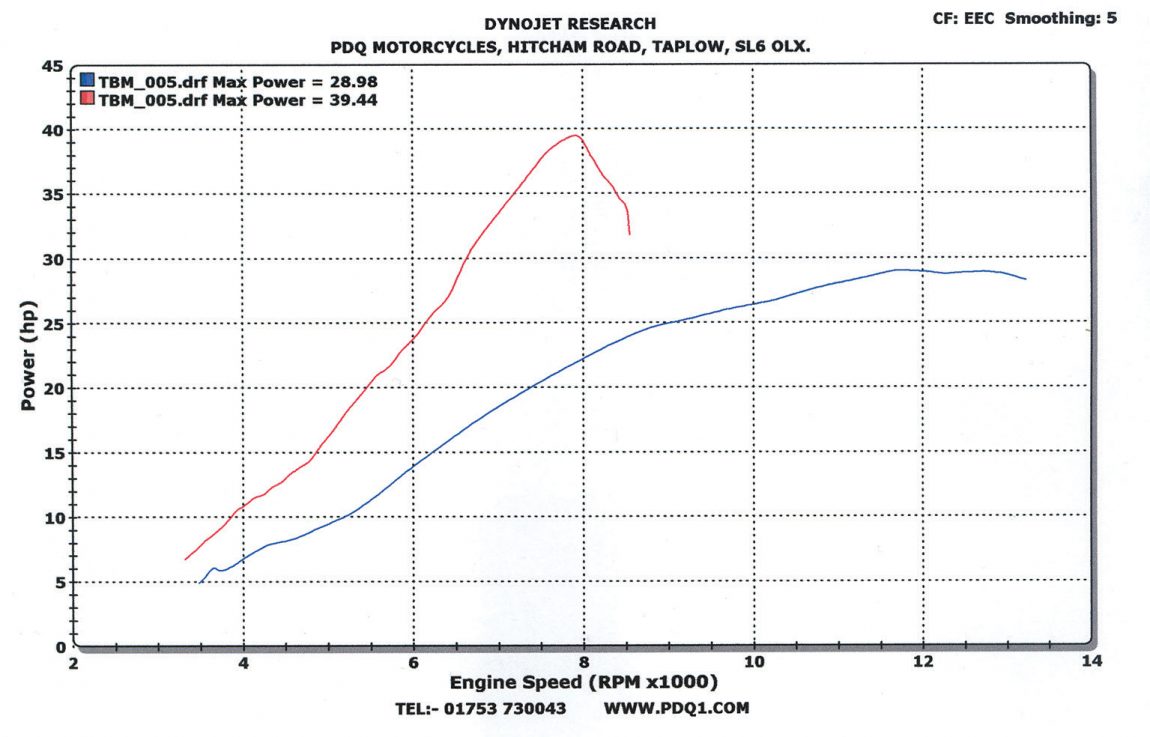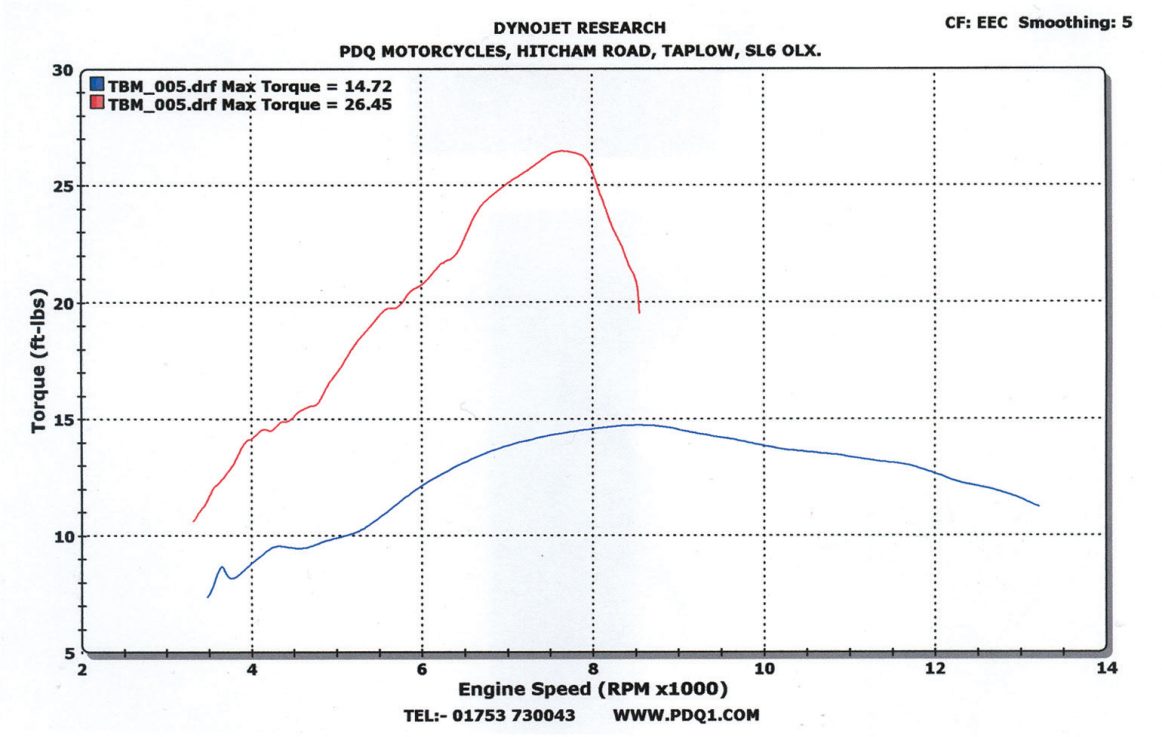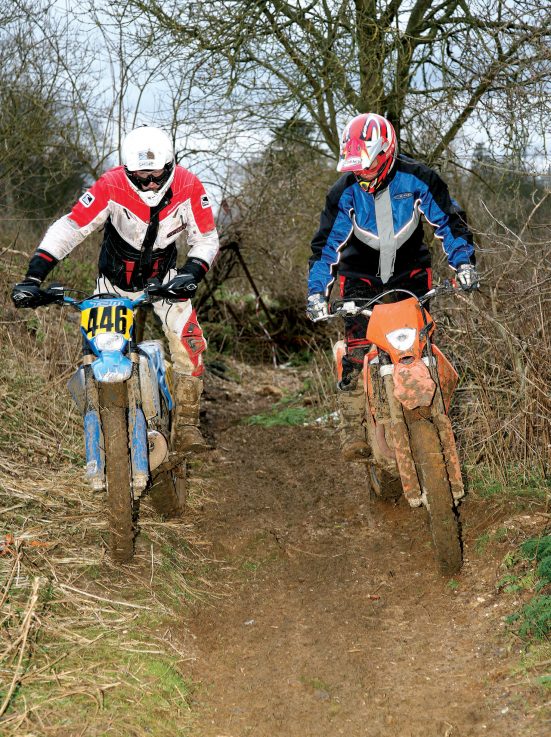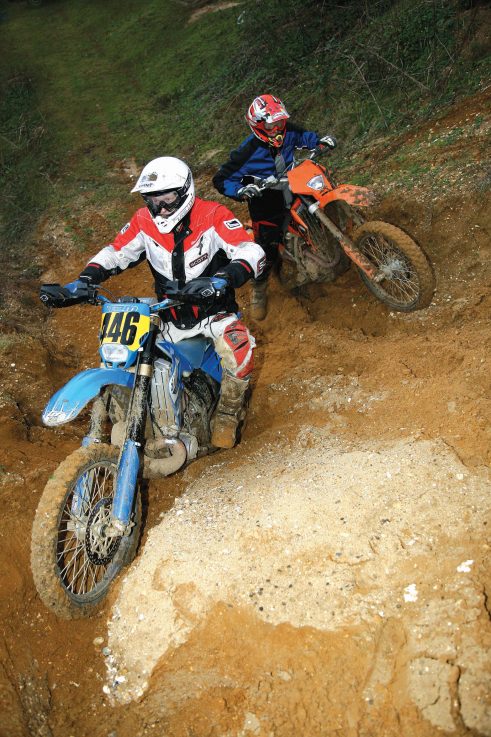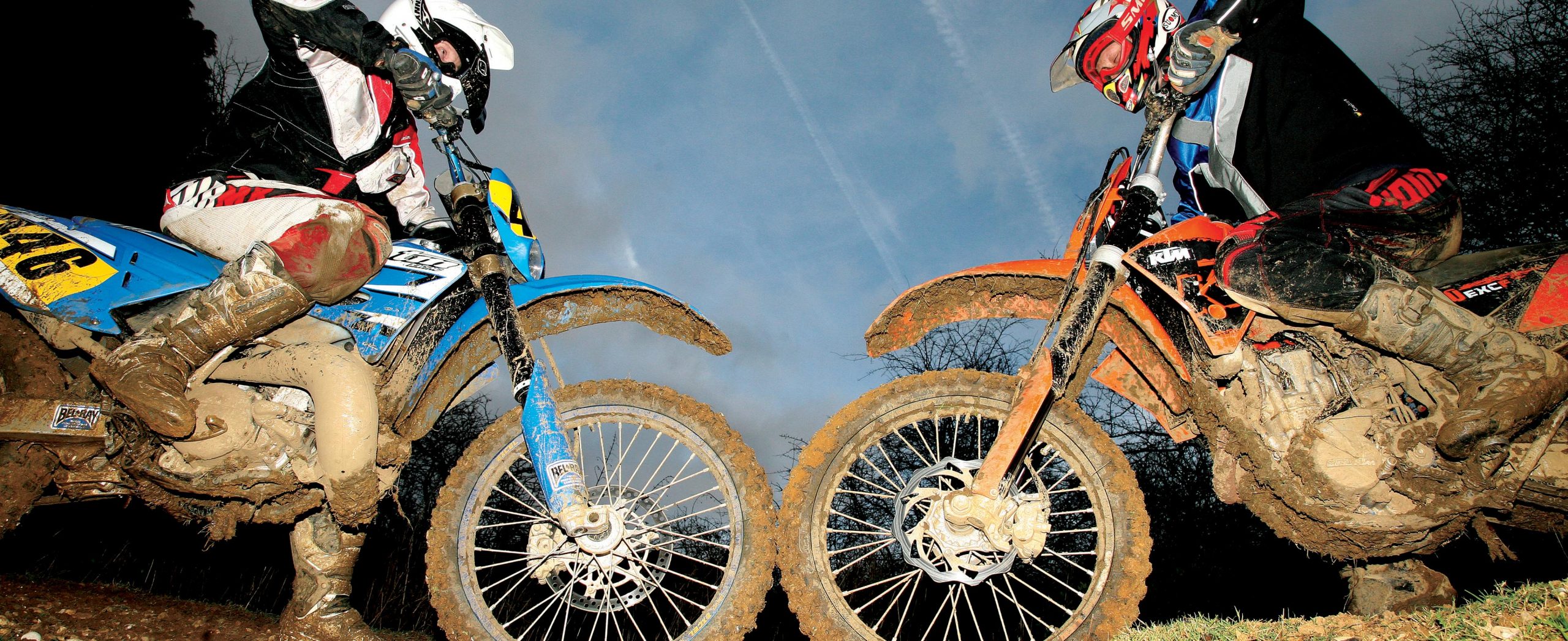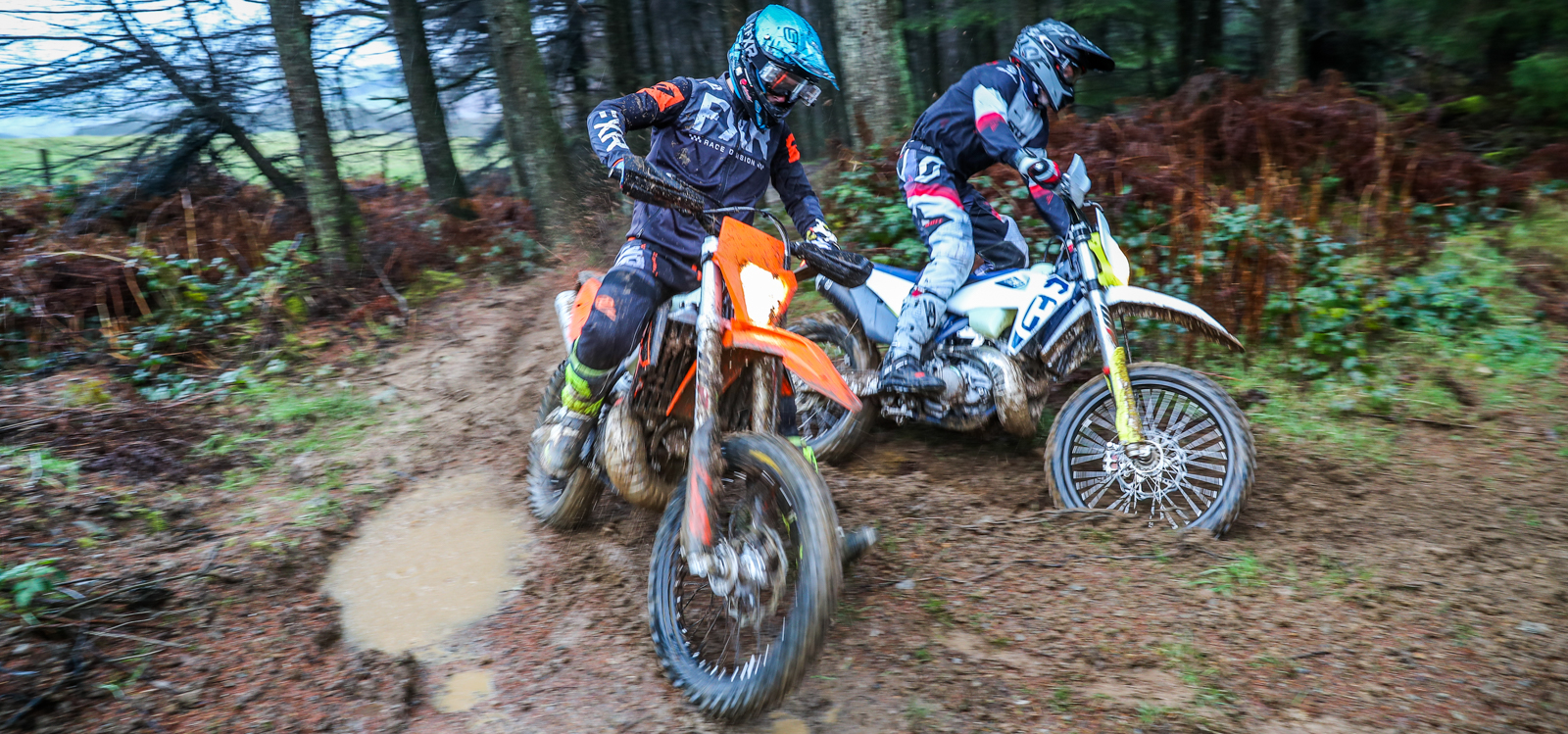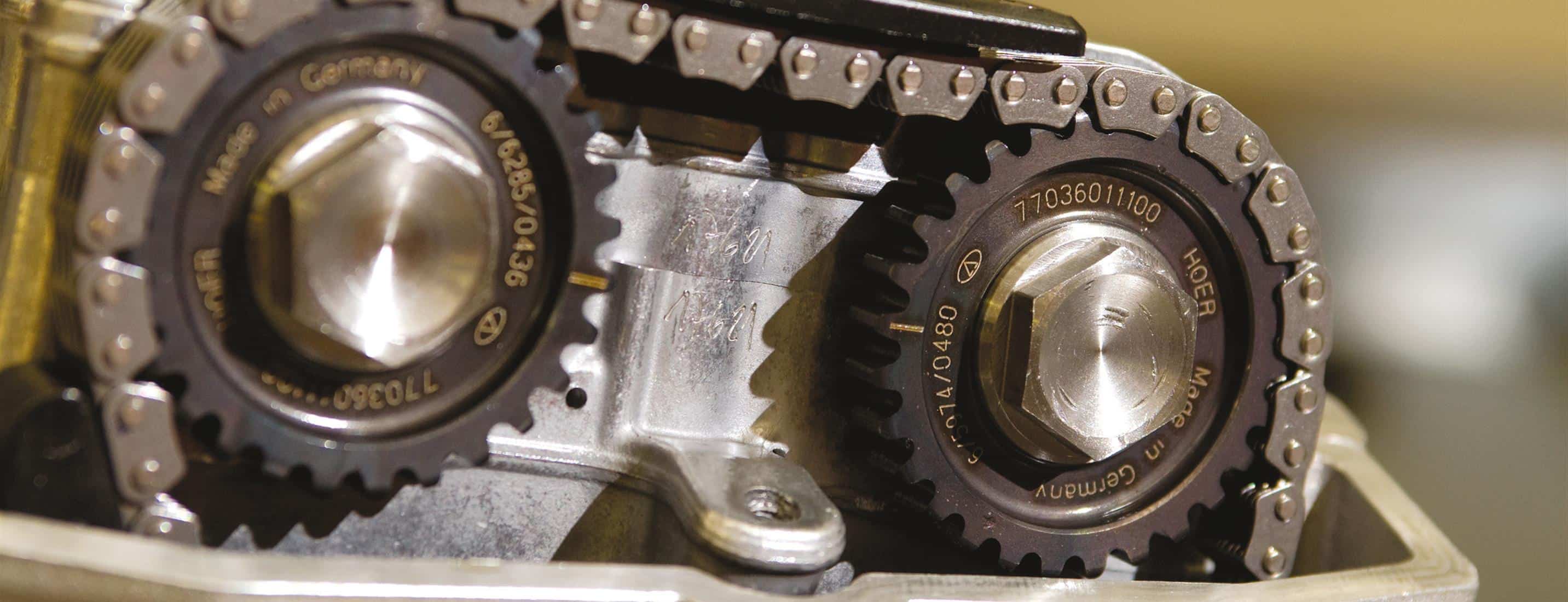Story: Barni; Pics: Si Melber
All too often in the decision between two-stroke or four-stroke, people get caught up in all the gumph surrounding capacity classes. ‘Do I need a 125 stroker or a 250 thumper?’ ‘Should I get a 450 or am I better off with a 250 two-stroke?’ Well, other than those racing at the highest level, who cares whether you ride in E1 or E2? What you should care about is which bike’s right for you…
Two-strokes are certainly in the ascendancy right now – we’ve seen it in the sales figures and we’ve noticed it in the paddock – and the 250 stroker not only makes a great racer but also doubles up as a versatile dirtbike. Ask us to pick a four-stroke racer tho’, and rather than opting for a 450 we’d have to say that for most people a 250 is a better bet. For while it doesn’t have the match of the bigger bikes in terms of power, it makes for a lighter much more competitive ride. So you want a 250 then, but the question remains… two-stroke or four-?
Two’s Company
If you hadn’t already guessed from our thumper shootout, we were pretty impressed by the KTM 250EXC-F. And so it stands as our four-stroke representative in this test. From the two-stroke camp we’ve opted for a similarly racy machine, our long-term TM EN250. Now, we should make it clear that this isn’t really a test between these two specific machines (that’s not really a fair comparison), rather the traits they exhibit as two different types of bike…
First off let’s talk weight. The KTM tips the TBM digi scales at 113.6kg (carrying seven litres of fuel), whilst the TM is just 1.9kg lighter at 111.7kg (with its 8L tank brimmed). Now in this respect the TM is a fair representation of the two-stroke 250 class, whilst the KTM is pretty exceptional for a 250 4T. And you’d think this was an unfair comparison but, unless you’re physically lifting the bikes, I’d beg to differ…
…Because even though there’s less than two kilos between them, this serves to highlight the way in which the two-stroke ‘rides’ MUCH lighter. And this trait – due to the lack of inertia from the 2T motor – is one of the major advantages of riding a stinkwheel. Generally speaking on a four-stroke the motor has a tendency to load up the front wheel under engine braking and if you’re over-enthusiastic, lock-up the rear too. These forces within the four-stroke motor also account for their tendency to drop into ruts and such-like (especially when you chop the throttle), whereas two-strokes will often float over and through such obstacles.
Another vast difference between the motors is in their power outputs, and the way in which they’re delivered. On the dyno, the TM made a very respectable 39.44hp and 26.45ft-lb of torque – pretty much the kind of figures you’d expect from a healthy 450 thumper. The KTM was around ten horsepower less at 28.98hp, and with 50 percent less torque at 14.72ft-lb. Clearly these are good figures for the respective classes, though it’s the delivery of this power which is really the biggest distinction between the two. The thumper spreads its power and torque over a wide rev range whilst the relatively low-, yet quick-revving two-stroke is all done by eight grand. This explosion of power can either make the 250 2T a real weapon, or it can turn it into a bit of a liability. Our particularly slick test track featured an off-camber turn up a steep hill, which required a particularly measured approach. Aboard the KTM it was possible to feather the throttle and really feel for grip whilst building a good turn of speed. On the two-stroke however you couldn’t afford to let it rip into the power, and instead had to take the ultimately far slower approach of waiting until the bike was entirely upright and pointing up the climb before giving it any real gas. When it came to a truly horrid claggy bog however, the TM used its instant power to rip through the mud and drive it forward, whilst the KTM simply couldn’t match it and was dragged down in the mire.
Disregarding specific brake set-ups, two-strokes also stop in a very different manner to thumpers. Some people find the stroker’s lack of engine braking slightly disconcerting, whilst others would argue that it leaves you to concentrate on the actual braking and not on how the engine is affecting the bike’s behaviour. Again, it’s here that the two-stroke’s lighter feel (and ultimately lighter weight) plays a big part and you’ll often find that this allows you to hold a line and tip into the turn much easier than you would on a thumper. On the other hand if you’re a fan of using engine braking (on steep downhills say) then the thumper is for you.
Debunking that heavy four-stroke myth:."The KTM tips the TBM digi scales at 113.6kg (carrying seven litres of fuel), whilst the TM is just 1.9kg lighter at 111.7kg (with its 8L tank brimmed)."
Barni
Four Pack
Many people are put off two-strokes by the perceived extra maintenance they require over thumpers. But these days that isn’t necessarily the case – especially as four-strokes have become more complex and powerful in the last few years. Although it very much depends on usage, a 250 two-stroke enduro bike shouldn’t require much more fettling than a modern, high revving thumper. Sure it’ll want a set of rings every once in a while and the occasional new piston but these are pretty straightforward jobs. The thumper by contrast will need regular valve clearance checks (and occasional adjustments), not to mention an oil and filter change almost as frequently as you’d drop the gearbox oil on the two-stroke. And if you’re going by the manufacturer’s recommendations, or the bike’s seeing a lot of hard use, you may want a new camchain, piston, con-rod etc… Of course, the four-stroke motor is far more complex than the two-stroke and therefore slightly harder to work on…
There’s often a big disparity between the initial purchase price of a two- and four-stroke 250, which can be anything up to a thousand pounds. And when it’s time to sell, thanks to the cost of rebuilding a four-stroke motor, you can often retain a greater percentage of the purchase price with a stroker, and find it easier to actually shift in the first place, but it will depend upon make and model.
Four for Two
So which bike do you reckon was quickest around our slick and twisty winter test track? Well it was close, but the easier to master mini thumper was consistently two seconds ahead of the more powerful two-stroke, simply because it could get on the throttle earlier and harder. Given a change of conditions (to really snotty, or perhaps really dry and fast), that result could easily have been reversed. Because what’s abundantly clear from this test is that whichever option you choose, what’s important is that you learn to really exploit your bike’s strengths. On a slick off-camber hillside a four-stroke pilot should be making the use of that predictable power delivery to edge away from the hair-trigger two-strokes. But on a rutted woods course the stroker should reel-in the more unwieldy thumper. And whichever type of bike you choose, remember the old cliché – it’s not what you’ve got but how you use it that counts…

